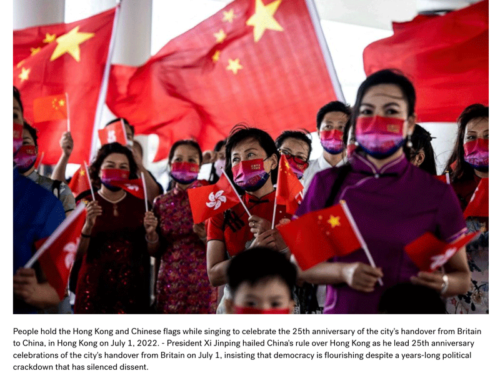BY DAVID ZWEIG AND SIQIN KANG | No. 4 | MAY 2020
EXECUTIVE SUMMARY
The Thousand Talents Program (TTP) was created by the Chinese Communist Party (CCP) in 2008 to overcome the brain drain of Chinese talent that has seen many of the best Chinese scholars and researchers take up residency in Canada, the United Kingdom, and particularly the United States.
The goal of Li Yuanchao, a reformist former CCP Politburo member who created the TTP, was to create an “innovative society,” not to steal U.S. technology. The first shift in a problematic direction occurred in 2010, when the TTP created a “part time” (PT) program to allow Chinese to have
simultaneous appointments abroad and in China. Such PT participants engage in collaborative research in China, which involves some technology transfer, triggering concerns among U.S. government officials. Although there are some cases involving theft or illegal transfer of technology from the United States to China, the major problem with the TTP is “double dipping”—where Chinese researchers surreptitiously draw fulltime
salaries in the United States and in China or hold grants simultaneously from both American and Chinese funders. But in such instances there has been minimal theft of technology or intellectual property (IP). The National Institutes of Health (NIH) has banned mainland scholars found to have violated their policies. Another major problem is the Foreign Thousand Talents Plan, through which China hires senior American researchers, sometimes in secret, who transfer the product of their own research to China. However, while such action is not necessarily illegal, it does transfer IP created with U.S. taxpayer funds to China for which American researchers receive handsome rewards. Going forward, China should make the TTP more transparent, the U.S. should be more transparent about its investigations, and the two sides should carry out extensive
dialogue. Such steps will protect collaborative research and publishing. Neither country will benefit from going it alone.
INTRODUCTION
The U.S. federal government has raised serious concerns about China’s national talent programs, in particular the Thousand Talents Program (TTP), through which China has been enticing its current and former nationals to transfer technology created in the United States back to China. The U.S. government feels strongly that economic security is a key component of national security and therefore sees the illicit transfer of knowledge to a strategic competitor as a threat to U.S. national power. But the United States appears to be overstating the threat, accusing hundreds of Chinese permanent residents, and American citizens of Chinese descent, of engaging in a massive theft of U.S. technology at the behest of the Chinese Communist Party (CCP).
This paper argues that the evidence supporting that assertion remains weak, as it is based on a unverified assumption that China, unlike most other countries, utilizes its current and former citizens to spy.1 Therefore, the U.S. government needs to make its case in a more transparent manner. There is no doubt that the Chinese TTP is opaque, a situation that China must resolve. However, the U.S. government effort is creating widespread suspicion of those engaged in collaborative research with China and alienating large numbers of ethnic Chinese scientists who were trained at the best schools in the United States and who prefer to remain in the United States. The result will be to intensify the decoupling of U.S. and Chinese scientific research, a situation that is harmful not only to China but to the United
States and the world.
The first section of this paper will present the history of the TTP. The second focuses on the emergence of the “part-time” (PT) option, under which 75 percent of Chinese TTP participants remain abroad, creating the conditions for China to engage in illicit technology transfer. The third part of the paper draws on two data sets to show that the majority of TTP participants worldwide are in the United States and that these are among the best Chinese researchers in the world. The discussion then turns to considering the American concerns against the TTP, which is followed by the Chinese response to this attack. The paper concludes by laying out some policy suggestions for the United States and China in order to maintain the most important scientific relationship in the world.
THE ORIGINS AND EVOLUTION OF CHINA’S NATIONAL TALENT PROGRAMS
Despite Deng Xiaoping’s assertion in 1978 that China would be willing to send scientists and scholars overseas, even if 5 percent did not return, reality has been much more punishing to China’s effort to create a world-class pool of talent. After the People’s Liberation Army (PLA) assault on Tiananmen Square, a new diaspora of Chinese scientists emerged instantly.
Since then, the return rates of Chinese who have received overseas doctorates (PhDs), who may be seen as the crème de la crème of global talent, have remained persistently low. For example, according to Michael G. Finn, as of 2013, the 5-year stay rates of those receiving PhDs in the United States in science or engineering was 84 percent for Chinese and 85 percent for Indians (see Table 1).[…]






Leave A Comment